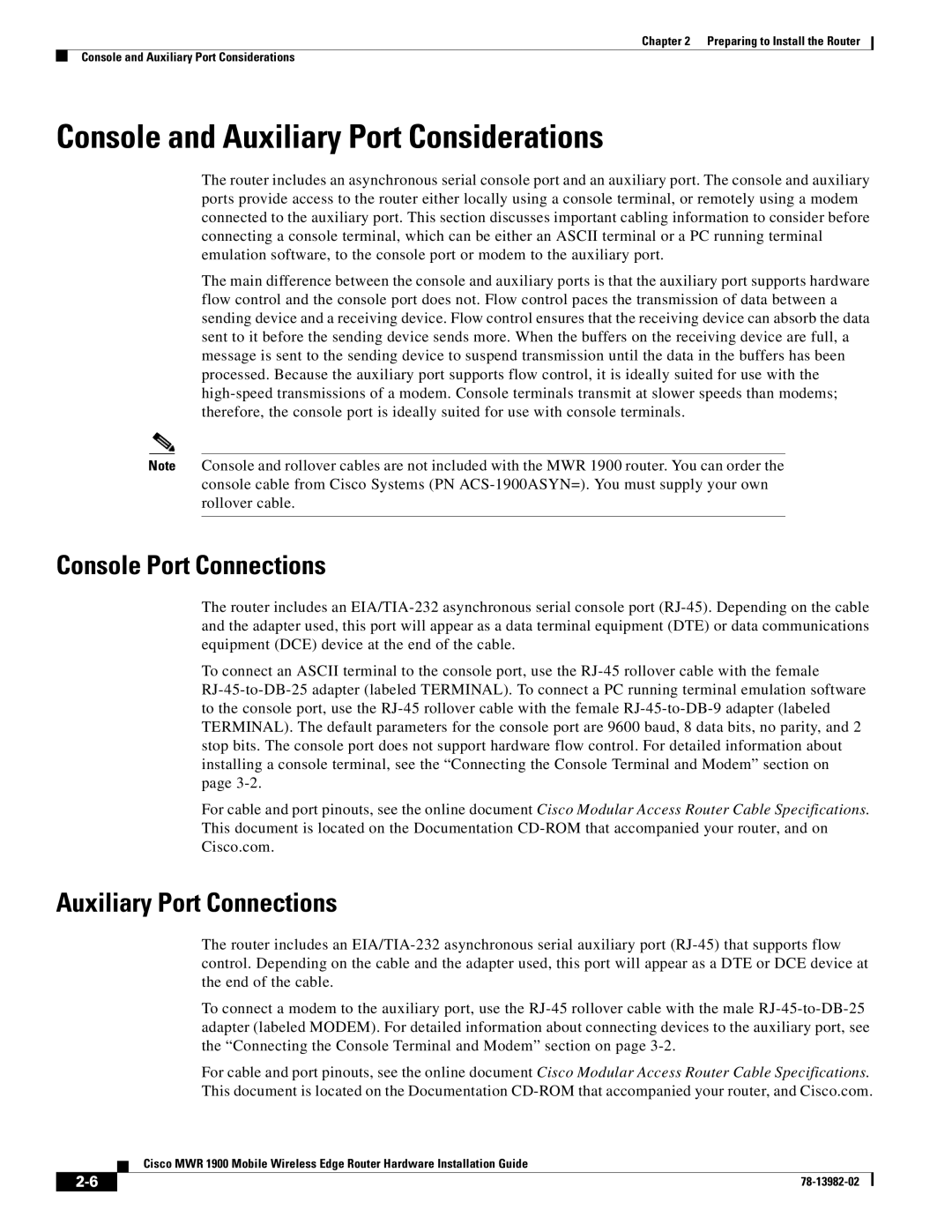
Chapter 2 Preparing to Install the Router
Console and Auxiliary Port Considerations
Console and Auxiliary Port Considerations
The router includes an asynchronous serial console port and an auxiliary port. The console and auxiliary ports provide access to the router either locally using a console terminal, or remotely using a modem connected to the auxiliary port. This section discusses important cabling information to consider before connecting a console terminal, which can be either an ASCII terminal or a PC running terminal emulation software, to the console port or modem to the auxiliary port.
The main difference between the console and auxiliary ports is that the auxiliary port supports hardware flow control and the console port does not. Flow control paces the transmission of data between a sending device and a receiving device. Flow control ensures that the receiving device can absorb the data sent to it before the sending device sends more. When the buffers on the receiving device are full, a message is sent to the sending device to suspend transmission until the data in the buffers has been processed. Because the auxiliary port supports flow control, it is ideally suited for use with the
Note Console and rollover cables are not included with the MWR 1900 router. You can order the console cable from Cisco Systems (PN
Console Port Connections
The router includes an
To connect an ASCII terminal to the console port, use the
For cable and port pinouts, see the online document Cisco Modular Access Router Cable Specifications. This document is located on the Documentation
Auxiliary Port Connections
The router includes an
To connect a modem to the auxiliary port, use the
For cable and port pinouts, see the online document Cisco Modular Access Router Cable Specifications. This document is located on the Documentation
Cisco MWR 1900 Mobile Wireless Edge Router Hardware Installation Guide
| ||
|
